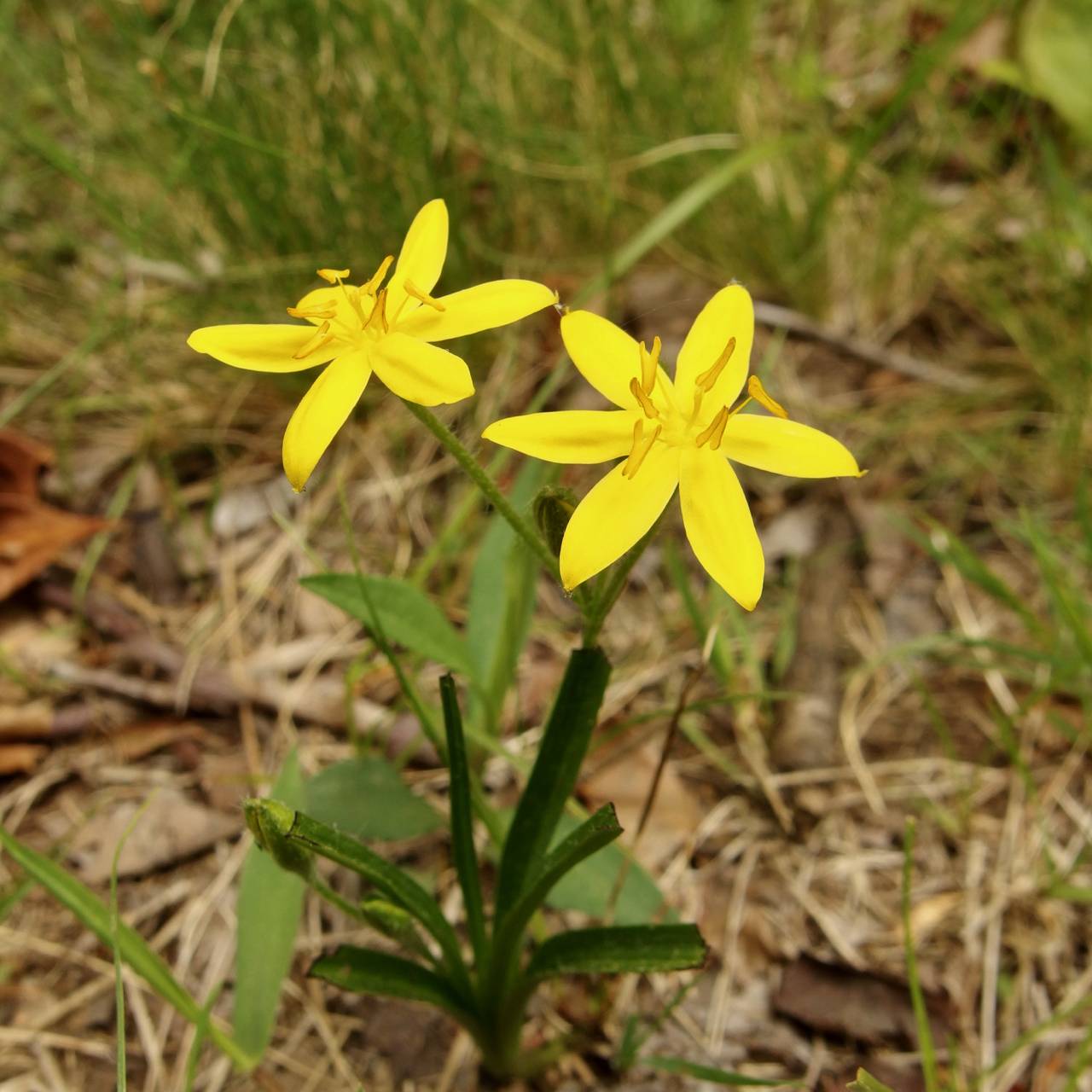|
Family: Hypoxidaceae |
Herbs, perennial, scapose, glabrous or sparsely to densely pubescent, often pilose, pubescence including at least some irregularly stellate trichomes, rhizomatous or cormose. Stems subterranean, usually vertical, fleshy. Leaves grasslike; blade linear to setaceous. Scape usually shorter than leaves. Inflorescences depauperate racemes or umbels, borne singly in leaf axils, bracteate. Flowers: tepals 6, spreading, distinct, often greenish abaxially, yellow adaxially, outer usually ± pilose abaxially; anthers 6, spreading, shortly connate at bases; ovary inferior, usually densely pubescent to pilose, sometimes glabrate; style erect. Fruits capsular, crowned by persistent flower parts throughout maturation. Seeds (5-)10-50 per capsule, ± globose, hilum and micropyle prominent, surfaces sharply to bluntly muricate or with rounded pebbling, sometimes with iridescent, membranous coat. Most species of Hypoxis are in southern Africa. The key to flowering plants presented below will work for most specimens; some specimens have intermediate characteristics and are impossible to identify without seeds. When mature seeds are available, identifications should be confirmed by examination of the seed characters. Relationships among the species in the flora are uncertain and will remain so until a better understanding of the primarily African H. angustifolia complex is reached. Therefore, species are treated here in alphabetical order.
Fls regular, the sep and pet distinct to the summit of the inferior ovary, similar or differing slightly in size, the sep usually pilose outside; anthers basifixed, but sometimes deeply sagittate; filaments short; ovules numerous in each of the 3 locules; fr indehiscent, or a loculicidal capsule; small perennial herbs from corms or rhizomes, with grass-like, usually hairy, basal lvs and an irregular umbel of 2-6 yellow fls or a single terminal fl. 100, irregularly cosmop. Gleason, Henry A. & Cronquist, Arthur J. 1991. Manual of vascular plants of northeastern United States and adjacent Canada. lxxv + 910 pp. ©The New York Botanical Garden. All rights reserved. Used by permission. |


